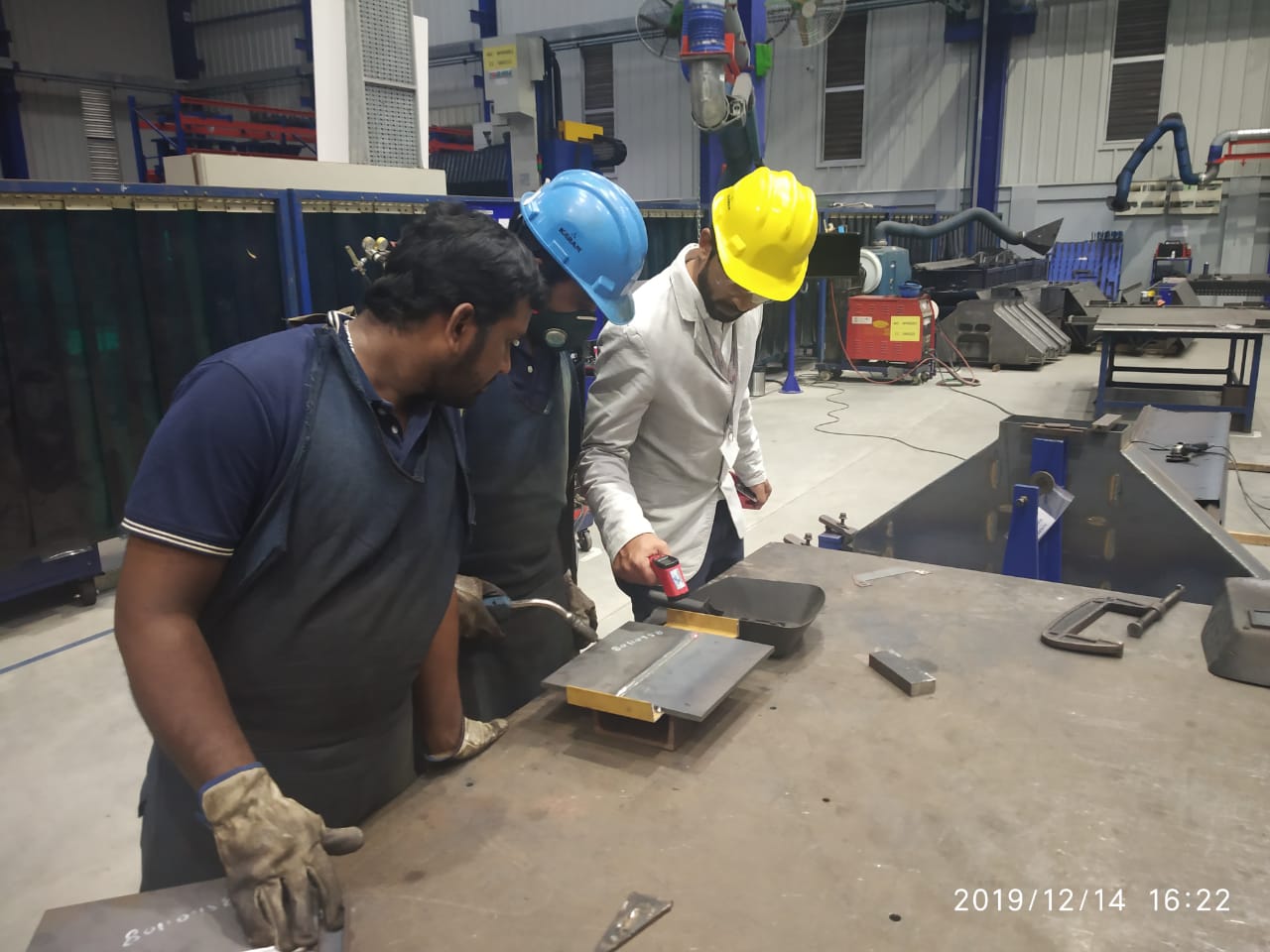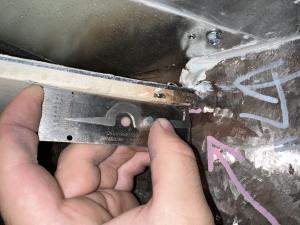Navigating Welding Inspection Gilbert Arizona: Necessary Insights for Market Professionals
Exploring the Importance of Welding Evaluation in Industrial Applications: Safeguarding Against Failings and Enhancing Long Life
Welding inspection serves as an essential line of protection in industrial applications, making sure the architectural stability and reliability of bonded components. By methodically recognizing issues such as porosity and incomplete blend, evaluations not just protect against failings however also prolong the life-span of necessary properties. Following sector requirements boosts both safety and functional performance; nonetheless, the implications of disregarding these practices can be serious. As we take a look at the multifaceted benefits of regular examinations, it becomes apparent that recognizing these characteristics is not merely a matter of compliance however a calculated crucial for durability and threat reduction.
Role of Welding Evaluation
Welding inspection serves as a crucial safeguard in industrial applications, ensuring that welded frameworks satisfy defined requirements of quality and safety and security. This process entails an organized assessment of welds to confirm their integrity, toughness, and compliance with recognized codes and specifications. The duty of welding evaluation is multifaceted, encompassing both visual assessments and non-destructive testing approaches, which may include ultrasonic, radiographic, or magnetic particle testing.
Effective welding examination recognizes prospective issues early, reducing the threat of catastrophic failings that can occur from insufficient welds. By guaranteeing that welds are executed according to create specs, assessors add to the general architectural dependability and longevity of elements in crucial applications, such as stress vessels, pipelines, and architectural frameworks.

Usual Welding Issues

One of the most prevalent defects is porosity, characterized by small gas pockets trapped within the weld steel. This takes place as a result of impurities or inappropriate securing gas, endangering the weld's strength. One more substantial defect is insufficient combination, where the weld metal fails to bond correctly with the base material, potentially bring about architectural weak points.

Splits can likewise establish throughout or after the welding procedure, typically connected to thermal stress and anxieties or incorrect cooling rates. In addition, damaging, where the base metal is deteriorated along the weld grain, can compromise the joint and is frequently brought on by extreme warm input or inaccurate strategy.
In addition, absence of infiltration happens when the weld metal does not get to the origin of the joint, leading to insufficient toughness. Comprehending these common issues is vital for assessors and welders alike to guarantee that bonded structures fulfill safety and efficiency standards, inevitably avoiding possible failures in commercial applications.
Benefits of Routine Inspections
Normal assessments serve as a critical secure in guaranteeing the integrity and longevity of welded structures. These analyses determine potential flaws and weaknesses that may endanger the integrity of welds, permitting prompt removal before concerns intensify. By executing a structured assessment regimen, companies can significantly decrease the danger of tragic failures that may result in costly downtime, devices substitute, or perhaps accidents.
Moreover, routine inspections add to improved quality control throughout the welding process. By adhering to a regular assessment timetable, firms can make sure that their welding methods meet well established top quality standards and best methods. This not only promotes a culture of liability but also encourages continuous improvement amongst welding employees.
Furthermore, normal examinations promote far better upkeep planning. By identifying wear and tear early, companies can strategically set up repair work and replacements, decreasing disruption to operations. This positive method ultimately causes extensive asset life expectancy and boosted overall performance.
Last but not least, a dedication to normal examinations can enhance a company's track record in the sector. Stakeholders and clients increasingly value organizations that focus on safety and security and top quality, consequently boosting depend on and potentially resulting in boosted service opportunities.
Market Standards and Laws
Sticking to industry requirements and policies is a fundamental facet of welding inspection that matches the advantages of regular examinations. These criteria, established by organizations such as the American Welding Culture (AWS) and the American Culture of Mechanical Engineers (ASME), supply a structure for best methods in welding procedures, products, and inspection methods. Compliance with these guidelines ensures that welds meet the needed high quality and safety benchmarks, dramatically lowering the threat of structural failures.
Regulatory bodies like the Occupational Safety And Security and Health Management (OSHA) additionally enforce standards that secure workers and the setting during welding operations. By following these established standards, markets can boost the reliability of their elements and frameworks, ensuring they perform as planned under various functional problems.
Furthermore, adherence to market requirements promotes consistency in high quality control, assisting in smoother interaction amongst stakeholders and regulative companies. This positioning not only reduces liability risks yet additionally boosts the reliability of organizations in open markets. Welding Inspection Gilbert Arizona. Inevitably, compliance with welding standards and guidelines is not merely a legal responsibility; it is an important financial investment in safety and security, performance, and lasting operational success
Future Trends in Welding Evaluation
As sectors remain to develop, why not try this out the future view of welding inspection is positioned to incorporate advanced innovations that enhance precision and efficiency. Among one of the most considerable trends is the fostering of automation and robotics in assessment processes. Automated systems can perform examinations quickly, decreasing human mistake and raising throughput in manufacturing settings.
Moreover, the combination of fabricated intelligence (AI) and maker knowing formulas will allow predictive analytics, enabling for real-time assessments and positive upkeep. By examining information from previous evaluations, these innovations can identify patterns that might show possible failings, consequently expanding the life expectancy of welded components.
In addition, non-destructive screening (NDT) techniques are expected to come to be more advanced, making use of tools such as drones and self-governing lorries equipped with sophisticated sensing units. Welding Inspection Gilbert Arizona. These improvements will certainly enhance the capability to evaluate unsafe or hard-to-reach areas without jeopardizing security
In addition, the trend towards digitalization will certainly cause boosted data management systems that help with much better monitoring, reporting, and compliance with sector requirements. In recap, the future of welding assessment is identified by technical advancements that guarantee to considerably boost dependability, security, and operational effectiveness in different commercial applications.
Conclusion
In verdict, welding evaluation serves an essential function in making sure the stability and resilience of bonded structures throughout different industrial applications. As improvements in technology proceed to evolve, the future of welding evaluation assures enhanced accuracy and effectiveness, ultimately adding to the longevity of critical facilities.
Welding inspection serves as a crucial line of protection in industrial article source applications, making sure the structural honesty and integrity of welded elements.Welding inspection serves as an essential protect in commercial applications, ensuring that welded frameworks meet specified criteria of quality and security. Ultimately, the duty of welding evaluation is crucial in promoting safety, enhancing efficiency, and protecting investments in industrial facilities.
These standards, established by companies such as the American Welding Culture (AWS) and the American Culture of Mechanical Engineers (ASME), supply a structure for ideal methods in welding procedures, materials, and examination techniques.In verdict, welding assessment serves a vital feature in making sure the honesty and toughness of bonded frameworks across various industrial applications.